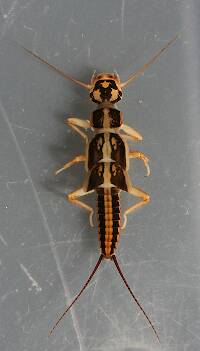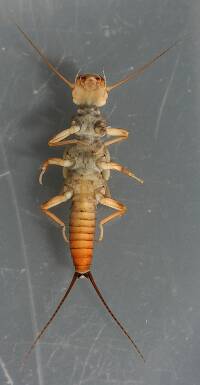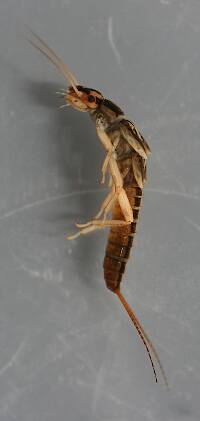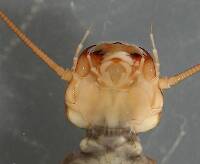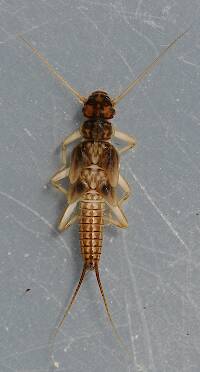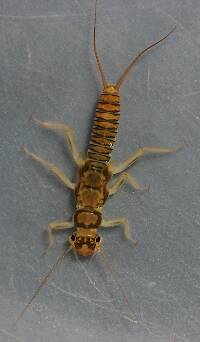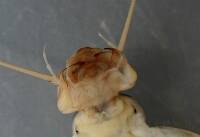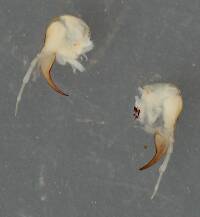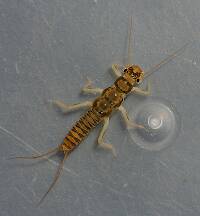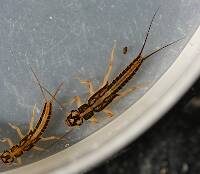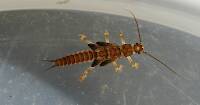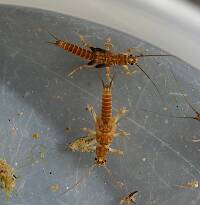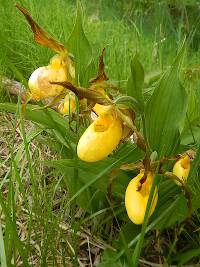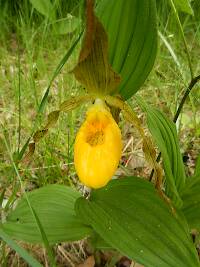
Blue-winged Olives
Baetis
Tiny Baetis mayflies are perhaps the most commonly encountered and imitated by anglers on all American trout streams due to their great abundance, widespread distribution, and trout-friendly emergence habits.
Featured on the forum

This is the first of it's family I've seen, collected from a tiny, fishless stream in the Cascades. The three species of this genus all live in the Northwest and are predators that primarily eat stonefly nymphs Merritt R.W., Cummins, K.W., and Berg, M.B. (2019).

Troutnut is a project started in 2003 by salmonid ecologist Jason "Troutnut" Neuswanger to help anglers and
fly tyers unabashedly embrace the entomological side of the sport. Learn more about Troutnut or
support the project for an enhanced experience here.
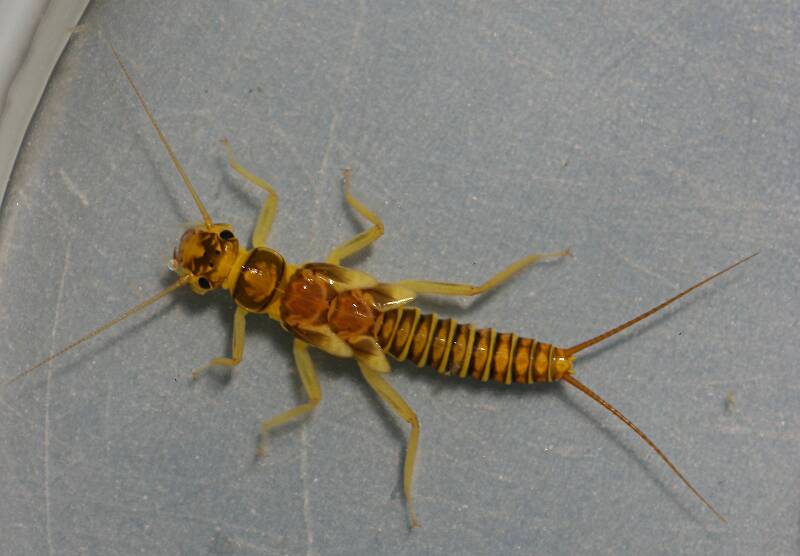
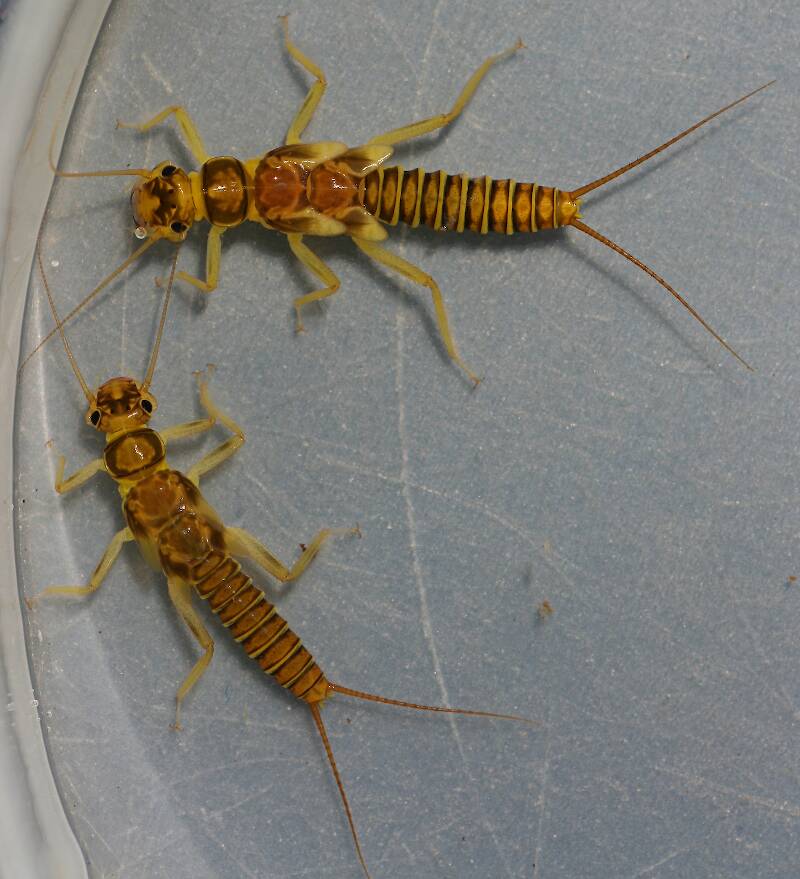
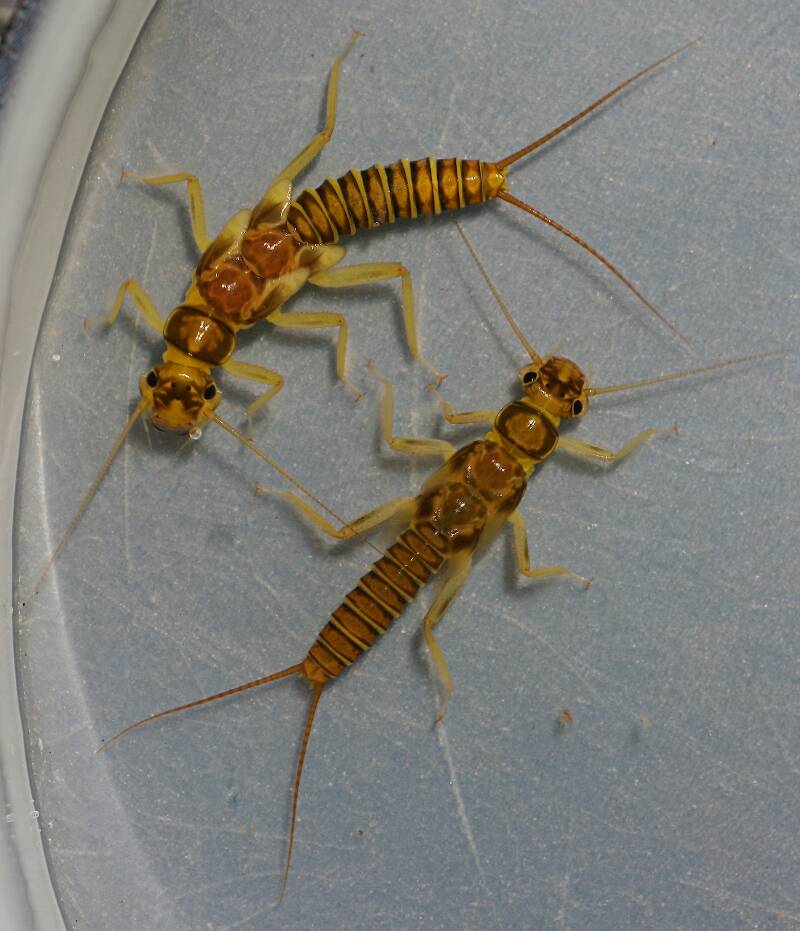
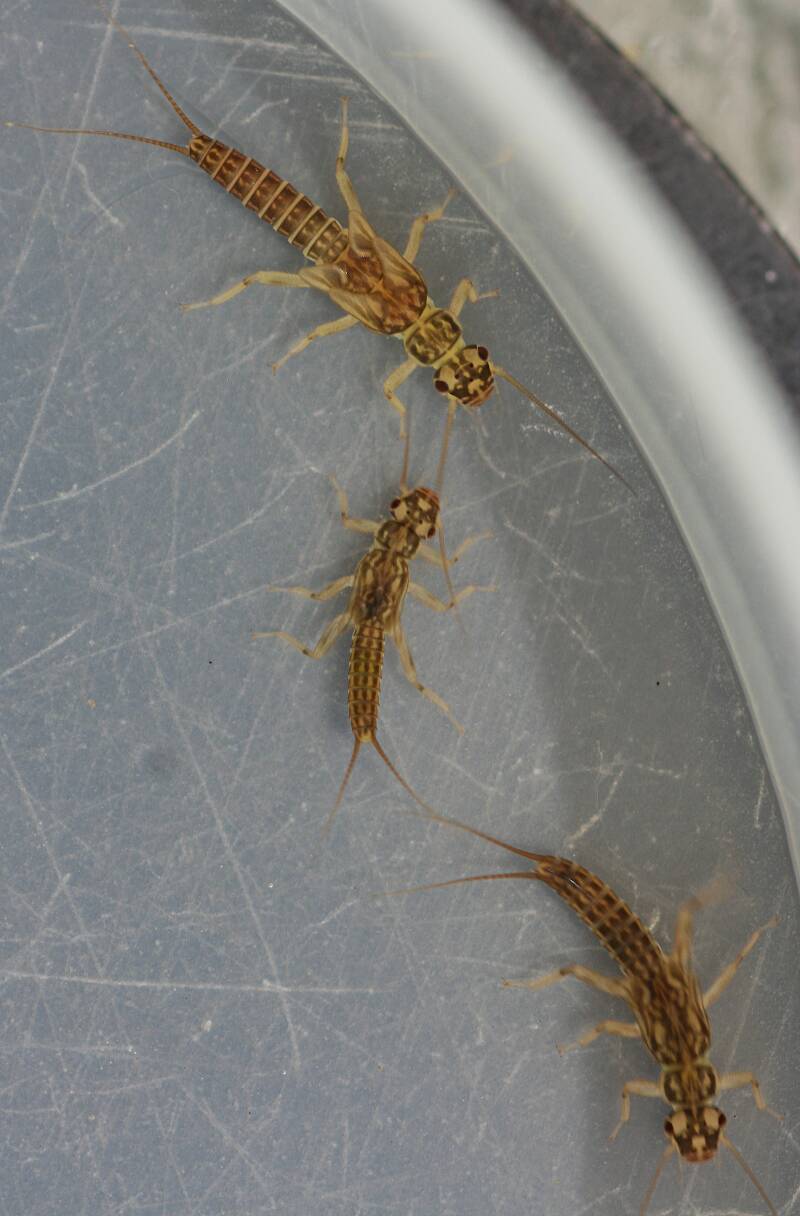
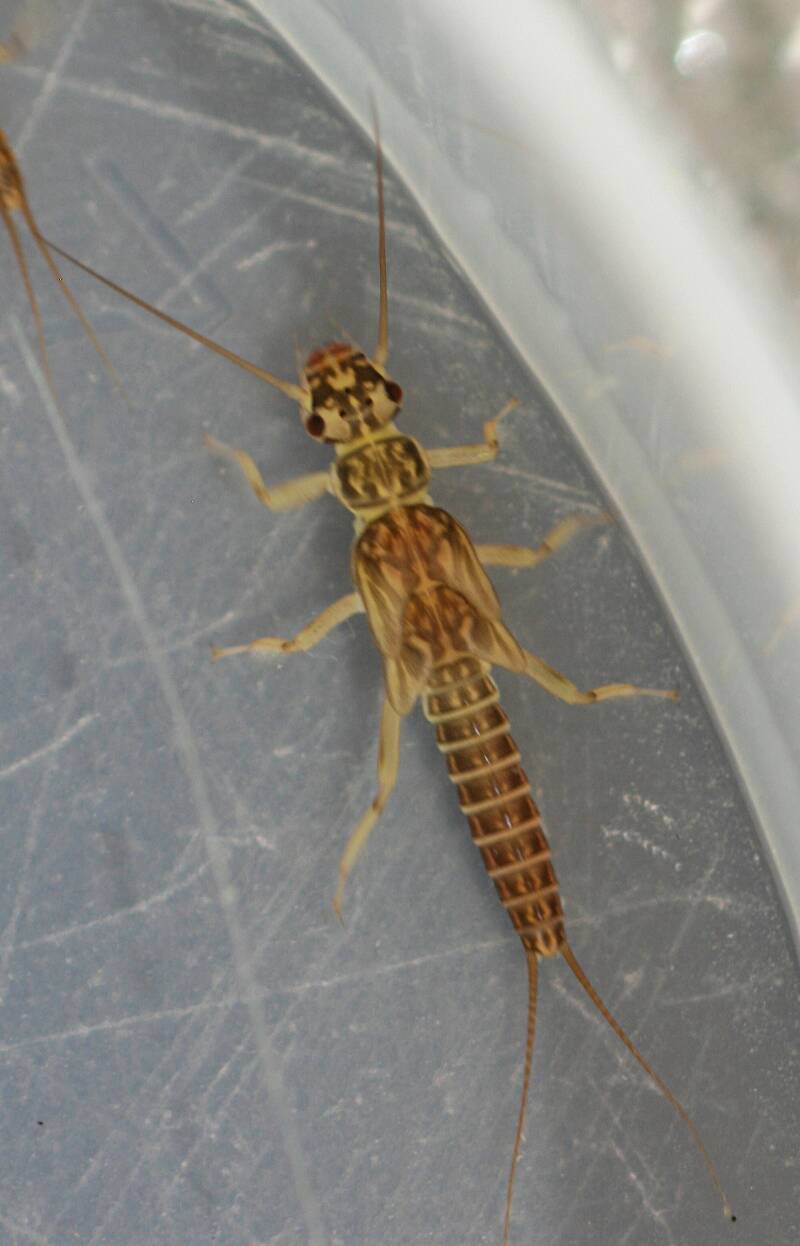
Millcreek on May 6, 2017May 6th, 2017, 2:39 pm EDT
I've submitted pictures of these before but Kogotus/Rickera wasn't as far along in it's instars and there weren't any live pictures of Isoperla mormona.
Kogotus/Rickeri can be found here:
http://www.troutnut.com/topic/9110/Kogotus-Rickera
Isoperla mormona can be found here:
http://www.troutnut.com/topic/8606/Isoperla-nymphs
The first three pictures are of Kogotus/Rickeri and the last two are of Isoperla mormona.
Kogotus/Rickeri can be found here:
http://www.troutnut.com/topic/9110/Kogotus-Rickera
Isoperla mormona can be found here:
http://www.troutnut.com/topic/8606/Isoperla-nymphs
The first three pictures are of Kogotus/Rickeri and the last two are of Isoperla mormona.
"If we knew what it was we were doing, it would not be called research, would it?"
-Albert Einstein
-Albert Einstein
Crepuscular on May 9, 2017May 9th, 2017, 3:06 am EDT
Nice. Thanks for posting!
Jmd123 on May 9, 2017May 9th, 2017, 12:57 pm EDT
Wonderful pictures as always, Mark. Beautiful creatures up-close too! Thanks for sharing.
Jonathon
Jonathon
No matter how big the one you just caught is, there's always a bigger one out there somewhere...
Oldredbarn on May 11, 2017May 11th, 2017, 4:16 am EDT
Mark
Talk to me about the second from last pic...The littler one in the group. Different hatch years? Is this stone on a two year hatch cycle?
I have found Hex nymphs in our Manistee that are like that. One a larger size and another half as big. I assumed that one was slated to hatch the following year (I found them after Labor Day), and the smaller one the years after?
Spence
Talk to me about the second from last pic...The littler one in the group. Different hatch years? Is this stone on a two year hatch cycle?
I have found Hex nymphs in our Manistee that are like that. One a larger size and another half as big. I assumed that one was slated to hatch the following year (I found them after Labor Day), and the smaller one the years after?
Spence
"Even when my best efforts fail it's a satisfying challenge, and that, after all, is the essence of fly fishing." -Chauncy Lively
"Envy not the man who lives beside the river, but the man the river flows through." Joseph T Heywood
"Envy not the man who lives beside the river, but the man the river flows through." Joseph T Heywood
Millcreek on May 11, 2017May 11th, 2017, 12:12 pm EDT
Eric and Jonathan - Thanks for the kind words.
Spence - The latest word I've found has been that no one knows for sure but for Isoperla nymphs it's generally assumed that it's one year. I would guess that the smaller one will transform this year. It may also be a male, they tend to be smaller than the females.
As for the Kogotus/Rickeri no one has checked out it's time for remaining a nymph or at least I'm unable to find anything.
Mark
Spence - The latest word I've found has been that no one knows for sure but for Isoperla nymphs it's generally assumed that it's one year. I would guess that the smaller one will transform this year. It may also be a male, they tend to be smaller than the females.
As for the Kogotus/Rickeri no one has checked out it's time for remaining a nymph or at least I'm unable to find anything.
Mark
"If we knew what it was we were doing, it would not be called research, would it?"
-Albert Einstein
-Albert Einstein
Quick Reply
Related Discussions
Topic
Replies
Last Reply
Re: Stuck on the family ID on this one -- any thoughts?
In Female Isoperla fusca Stonefly Adult by Troutnut
In Female Isoperla fusca Stonefly Adult by Troutnut
0
Nov 12, 2020
by Troutnut
by Troutnut
0
Feb 21, 2018
by Millcreek
by Millcreek
0
May 25, 2012
by Jmd123
by Jmd123





